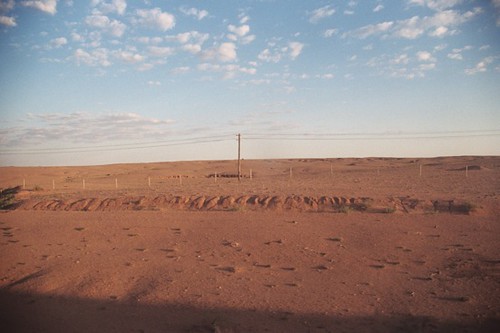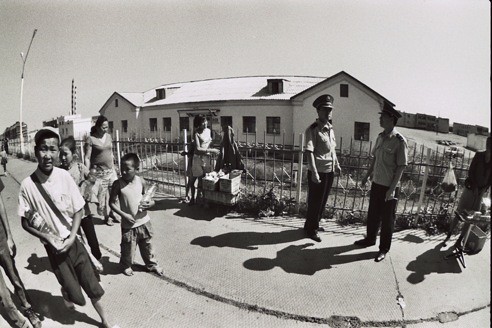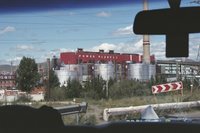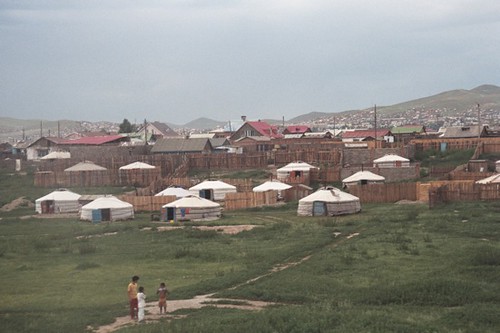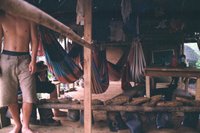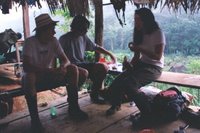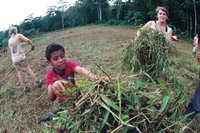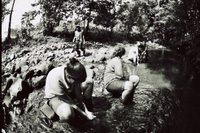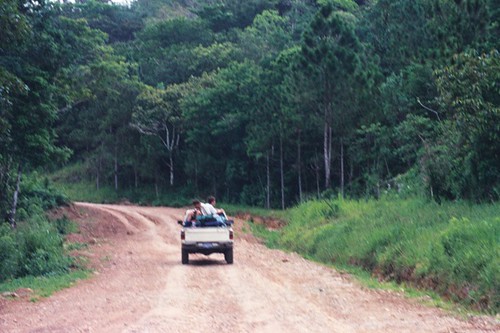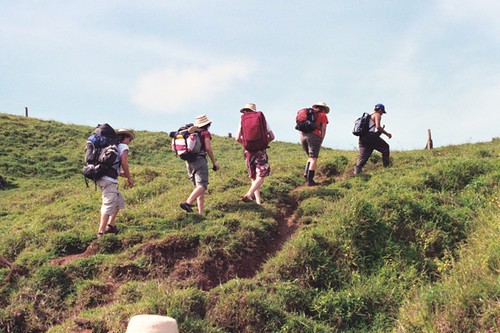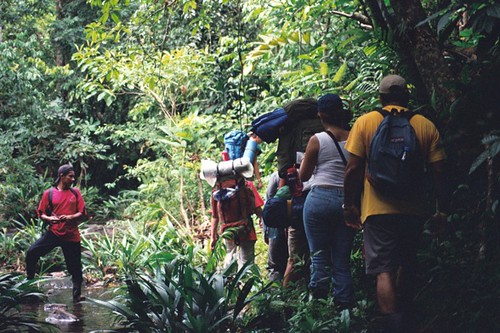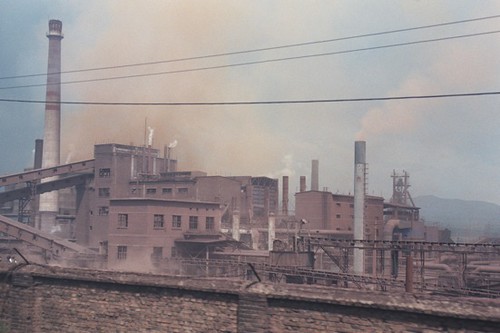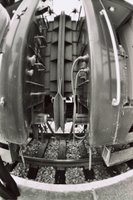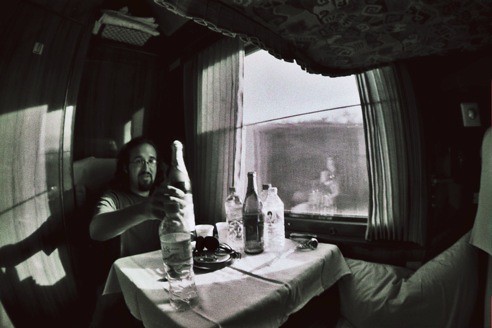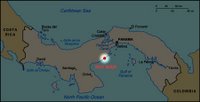Morning.
I awake in the capital of Mongolia, Ulaan Bataar, which in Mongolian means Red Hero. It might be pertinent at this juncture to note that one will find the city’s name spelt many different ways. Sometimes it is presented as one word, others as two, and the amount of A’s that make up all but one of its vowels varies from a minimum of three to a maximum of six. In rare circumstances the last one or two A’s are replaced by an O. For future reference, this is the most common form: Ulaan Bataar.
To continue, I am in my $40 a night room at the Jiguur Grand Hotel. The following points summarize our stay in this establishment, which lasted less than 24 hours.
- One should not expect air conditioning of any kind. Open a window.
- A sign displaying “English Spoken” should read: English Spoken… not here.
- When they tell you they accept credit cards they actually mean they want cash.
- A local phone call from the room costs an unannounced 600 Tugriks or 50 cents per minute. This is 500% more than using a street phone.
- The advertised Internet and business center was still under “construction.”
- I didn’t bother to look for the spa, but don’t expect one.
Anyways I meet up with Andy and Lili, who had arrived just last night from a six-week stint as a tour guide in the Mongolian countryside with a group of teenagers. Noon is approaching and we check out just in time so as not to be charged an extra $40. We leave with a gracious but discontented demeanor as the hotel personnel wave us goodbye bearing smiles. Smiles that almost seem to speak softly, “suckers.”
Andy and I go about to look for an alternate hotel while Lili hangs out with her tour group to begin saying their goodbyes. In our search for a new hospice we stumble upon two places that are moderately priced, but fully occupied.
 On our third attempt we round the corner from the State Department Store (SDS), unofficially the center of the city, and spot the sign of a hostel, “Chingis Backpackers” hung over a four story apartment building. Entering the cool and damp building takes me back about fifty years, in my imagination since I’m only half that age, when the mechanism of communism helped modernize the country. Now these strong buildings are showing signs of aging and neglect. I suspect no hot water here and foresee a great disappointment.
On our third attempt we round the corner from the State Department Store (SDS), unofficially the center of the city, and spot the sign of a hostel, “Chingis Backpackers” hung over a four story apartment building. Entering the cool and damp building takes me back about fifty years, in my imagination since I’m only half that age, when the mechanism of communism helped modernize the country. Now these strong buildings are showing signs of aging and neglect. I suspect no hot water here and foresee a great disappointment.Andy and I enter the reception/living room of one of the apartments. Greeting us in soft-spoken English is the owner of the hostel who has one apartment available. We need not one apartment, just one or two rooms for a total of three people, but we humor her in showing us the apartment anyways. Located on the first floor of the building, we enter an apartment that includes a spacious room with two pairs of bunk beds and one king size bed, a kitchen with stove and fridge, and a complete bathroom. Well this is obviously too much, but we ask how much? Excuse me? Twenty dollars a night? Per person!? For the whole apartment?! Includes towels and sheets?! No phone, no spa, no business center, no credit cards, no air conditioning, no misleading. We take out a crisp twenty and hand it to the lady. Our first night has been paid for.
Please note: As in most countries with weak currency the US dollar is acceptable at most establishments in Mongolia.
After getting comfy in our economically priced flat we walk across the street to the SDS to begin exploring the city. Half of Mongolia’s two million populace live in the capital within low apartments, houses, and gers that paint the outskirts.
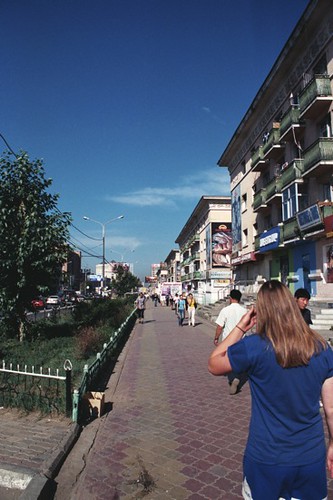 Most of the architecture is made up of monotone communist-era buildings, but some new construction projects are propping up. The streets are in dismal shape not to mention the sidewalks, which remind me of Panama; an endless obstacle course for anyone commuting more than a few blocks on foot. The only decent and wide sidewalks are on the main Peace Avenue. But among the city that time forgot are one of the most sophisticated looking people around. They are chatting on the latest cell phones and sporting the newest trends in fashion. Amazingly, women wear heels to tread among the un-walkable streets. Just goes to show what a free market economy can do for individuals.
Most of the architecture is made up of monotone communist-era buildings, but some new construction projects are propping up. The streets are in dismal shape not to mention the sidewalks, which remind me of Panama; an endless obstacle course for anyone commuting more than a few blocks on foot. The only decent and wide sidewalks are on the main Peace Avenue. But among the city that time forgot are one of the most sophisticated looking people around. They are chatting on the latest cell phones and sporting the newest trends in fashion. Amazingly, women wear heels to tread among the un-walkable streets. Just goes to show what a free market economy can do for individuals.For dinner we meet up with the father of an old friend who has been living in Mongolia for three years. Lili is having a goodbye dinner with her group. He takes us out to a fine Korean dinner at one of his favorite restaurants. Korean in Mongolia?! Yes. In fact, Mongolians feel a close tie to the Korean nation and vice versa. This is due to their classic genetic links. All through out Ulaan Bataar we see advertisements for Korean products and phrases like “Korea loves Mongolia.” And it showed in this establishment’s food. I cannot recall the name of the place, but if you’re in town just ask for the best Korean food and you can’t miss. Afterward, we returned home. It sure felt like home to have a whole apartment. In preparation for sleep I approached the sink to wash my face and brush my teeth. I turned the knob and out flowed hot burning water! The building’s way of scolding me for my previous doubts. Maybe its true… They don’t make ‘em like the communists used to.

